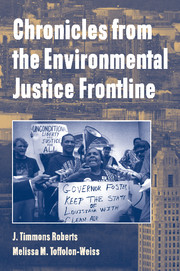“TOXIC IN ALABAMA, NONTOXIC IN LOUISIANA”
Over a period of a week and a half, eighty-one sleek white tanker trucks, with red diamond-shaped warning placards, rolled down the highway from an Exxon oil-drilling site at Big Escambia Creek in Alabama. Crossing the Louisiana line on Interstate 10, their cargo was magically transformed from “hazardous” to “nonhazardous” by the different definitions found in the laws of the two different states. By crossing state lines, the price of disposing of the contents also magically plunged, from $85 a barrel to just $6.50.
This alchemy was possible due to an enormous loophole negotiated by oil companies after frantic days of political maneuvering in Congress leading up to the votes on the 1980 amendments to the Resource Conservation and Recovery Act (RCRA). In the loophole, with the obscure name Rule 29-B under Section 3001(b)(2)(A) of RCRA, the regulation of “oilfield waste” is left to the individual states. Alabama had defined the by-product of oil drilling as hazardous material, whereas Louisiana, the site of decades of oil exploration, elected to label oilfield waste as nonhazardous. EPA secretary Carol Browner put it simply: “Big Oil got a sweetheart deal.”
The trucks, with no markings indicating that they carried Exxon's waste, and no placards on the outside detailing what was in them, turned off Interstate 10 to cross the Mississippi River onto Highway 90, and then turned left onto the tiny Louisiana Highway 24 surrounded by marshy willows, from Houma to the tiny bayou fishing town of LaRose.
